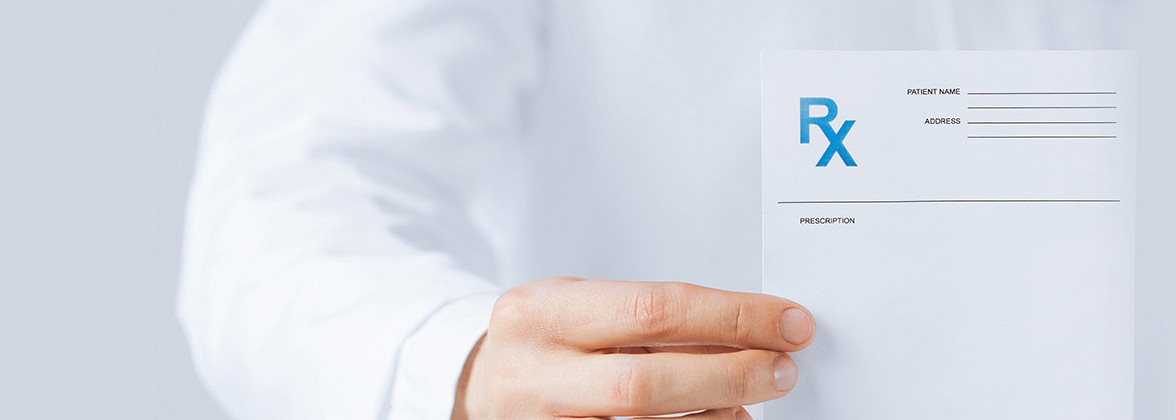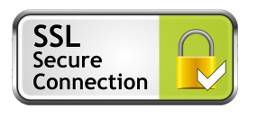Telemedicine is Becoming the New Age of Meeting Healthcare Needs
 There have been many changes in the health care industry in the last few years. With the passing of the Affordable Care Act, many people who were unable to obtain medical insurance now have protection. Still, there are at least 31 million people in the country that remain “underinsured” or are found in plans that they can little afford. Many have been forced to obtain policies that are beyond their means or have high deductibles that will force them to pay major expenses out-of-pocket that they can ill afford.
There have been many changes in the health care industry in the last few years. With the passing of the Affordable Care Act, many people who were unable to obtain medical insurance now have protection. Still, there are at least 31 million people in the country that remain “underinsured” or are found in plans that they can little afford. Many have been forced to obtain policies that are beyond their means or have high deductibles that will force them to pay major expenses out-of-pocket that they can ill afford.
Some are finding a way around these complications with the use of telemedicine. By foregoing the in-person visit, these underinsured are able to get the coverage they need without putting their health at risk. As a result of an unstable economy, affordable health care has become an ever-increasing need, sparking a medical transition that everyone is watching closely. According to Health Plan innovation News, “Healthcare is in the midst of a major market transition and technology can make a tremendous impact … makes the latest in a series of steps we are taking to help modernize our healthcare system and bring about new models of healthcare diversity.”
Across the country, more and more care-at-a-distance options are popping up giving patients easier ways to interact with their medical professionals in order to meet their health care needs.
Affordability
One of the main reasons this type of treatment has been successful is that people everywhere are tired of the high costs associated with medical treatment. Sometimes just a simple visit to a doctor’s office can run into hundreds of dollars and insurance premiums can easily demand that much each month. Families with low incomes and who are already struggling financially cannot afford to be forced into a position where they may have to choose between getting proper medical treatment when they become ill or injured and feeding their household.
With telemedicine the risk of having to face such decisions has been reduced. There is a wide variety of telemedicine centers that offer their services at an extremely affordable rate with some as low as $15/month. As one such provider explains, “The low monthly fee includes unlimited doctor consultations at no additional charge. Doctors can prescribe non-controlled medication for a savings of up to 85% on prescriptions.”
The result is that more people are willing to seek out the medical treatment they need without fear of losing their shirt along the way.
How it Works
Having a telemedicine doctor to treat a patient is even simpler than an in-person visit. All that is needed is to schedule an appointment, provide the correct medical background and family history, and the doctor will review the patient information submitted and call back. And if medication or supplies are needed the doctor can even issue a prescription online called an escript and send it directly to the pharmacy. Then the medical records are updated.
Patients can also get needed help through the use of mobile apps, which can get them in touch with their physicians, pharmacies, and even insurance providers without the long telephone waits or having to make in-person visits.
Who Benefits
The benefits of telemedicine can be without limit. The whole purpose of the Americans With Disabilities Act was designed to ensure that everyone has access to medical care whenever they need it. While the vast majority of people had access to medical services, millions could not get access for a number of reasons. Some worked for small businesses that could not afford the extra expense involved in paying for medical insurance, others were self-employed and were unable to get an affordable policy without the backing of a major corporation.
Because telemedicine providers offer a wide range of customized pricing and benefit plans, those isolated groups of individuals are in a better position to get the medical coverage they need. Even those who could afford to pay the added expenses that often come with in-person medical care can take advantage of such a program and save much of their normal out-of-pocket expenses that often come with getting treatment.
Why Now?
As the population continues to age and develop major health problems, the need for a more efficient way of treating them increases. With each passing year, the numbers of those who need medical treatment continues to rise and the old methods of treating patients cannot keep up with the growing numbers.
Every year there are more elderly than ever before, which translates into more people suffering from chronic diseases, and health problems. At the same time, the financial side of medicine is struggling, forcing people to find better treatment for fewer dollars. As they explain at the Southeast Telehealth Resource Center, “A fundamental and comprehensive change in the management and delivery of healthcare is crucial to get the most cost effective an efficient use out of limited healthcare resources. TeleHealth applications and solutions are viable options that can be leveraged to address such pressing healthcare issues.”
The world of medicine is changing in much the same way as every other industry is. Today’s lifestyle demands incorporating modern technology in every facet of it including medicine. It is not the first time that medicine has had to adopt to new ways of doing things and certainly won’t be the last. But for now, it seems that telemedicine is one of those ways for many of us to learn how to adapt to a new life in the 21st century and even beyond.
The new buzzword in medical treatments today is telemedicine. It has gradually become one of the most popular and practical uses of modern technology in the health industry today. With patients being able to have almost immediate access to medical advice, prescriptions online, and treatment options, it seems to have become a real godsend in today’s modern world.
One area that has embraced the use of telemedicine is in rural communities where traditional medical facilities are far away. Rather than a patient having to travel 30, 40, 50 miles or more to the nearest doctor or clinic, many would have struggled through their emergency or injury on their own, without the use of proper medical supervision - often with dire consequences as a result.
Patients might have viewed the long travel time as more risky to the overall health of the patient or may have even been unable to get the transportation to the proper facility at all. Now with telemedicine, treatment is only as far as your technology. As one report explains, “It’s no secret telemedicine has had a profound impact on the industry, both nationally and globally. Organizations in big and small cities are seeing the benefits of employing such technology, and the biggest impression could arguably be on those living in rural communities.”
Since many of the areas with the largest medical needs can be found in these rural areas, it has been a major focal point of implementation in recent years. The benefits to these outlying communities cannot always be measured in dollars and cents but in quality of life as well.
Access to Experts Everywhere
No one can be an expert in every possible medical situation so even if a rural community already has a qualified physician to service them, there will inevitably come a time when he will need to consult with a specialist in a needed area of medical treatment. Through telemedicine, their ability to have video conferencing with other medical experts is crucial. On the other side, patients who are in need of medical care when the nearest facility is too far to travel to, the needed advice could be as close as the app on your smart phone or your home computer. Patients can receive reliable advice on treatment, get prescriptions online, and be able to consult directly with a doctor without having to make the trip to another location if not entirely necessary.
Telemedicine Technology
While consultations are a key ingredient in telemedicine, there is another area where it can be of benefit to rural patients. The use of monitoring devices in long term care, care for the elderly, or those who are in need of regular monitoring of their health can also benefit from this new phase in the health industry. With a number of different tech options for monitoring health, one can be assured that what’s going on in their bodies is being transmitted in real time to specialists in the area of medicine that they need the most. These devices can literally “beam” essential data to monitoring centers whose sole responsibility is to watch over these patients. As pointed out at CIO.com, “Telemedicine uses a variety of electronic communications media, ranging from teleconferencing to image-sharing to remote patient monitoring, to provide clinical services to a patient.”
As the population continues to grow and technology continues to advance, the age of telemedicine will become even more beneficial for those in rural communities in many ways.
Specimen Collection
One might wonder how telemedicine can improve diagnostics if specimens are remote. Most rural communities do not have the population to support their own diagnosticians, but with telemedicine, centers have been set up (or kiosks) where x-rays, and specimen collections can be obtained and the data sent electronically to the larger populated centers for analysis. Results can be determined and sent back to the patient through secured telecommunication channels. This method saves both the patient and the medical team time while they wait for specimens to be delivered to another location, analyzed, and the results returned often by “snail mail.”
Mental Health Benefits
Those patients that suffer from mental health issues also can benefit from telemedicine technology. Patients can consult with medical doctors, therapists, and other specialists through online chat, videoconferences, and secure online messaging tools. Diagnosis can be made and they can even get their prescriptions online through these secure channels.
The benefits of utilizing telemedicine in rural areas can be endless. With the use of modern technology there is no longer a need for anyone to go without the proper medical care. Even those with severe, life-threatening conditions can find the help they need to improve their health. According to a study reported on in the Journal of Cardiovascular Prevention & Rehabilitation, “The evidence has already shown that formal cardiac rehabilitation programs consistently reduce the risk of further events, improve personal risk factor profiles, encourage compliance with drug therapy, and enhance quality of life through exercise and education.”
It is obvious that those that use telemedicine are benefiting greatly from the new program. The system may not be the end all solution for everyone everywhere but it does bring more people into the fold with each new technological advancement. Through the use of telemedicine, more people are able to live longer, with improved health, and a much better quality of life without the hassles often involved in getting traditional medical treatment.
The Thin Client: New Advancement in Telemedicine
According to Phys.org (2012), Fujitsu Laboratories recently announced improvements in telemedicine with the development of a high-speed “thin client”. Apparently, in low-quality network environments (poor or slow Internet connections), the new technology (thin client) has the ability to respond up to ten times faster to the operation system. In other words, this new technology makes communication between patient and doctor better than previous, especially for people who use hotspots like as coffee shops with Internet access. Also, the thin client offers better service to people who have slow Internet connections or those who are communicating with doctors in another country.
The high-speed thin client application allows for a 90% quicker response time. Not only does this application allow for better communication in low-quality network environments, it will eventually allow for many other uses. New thin client applications are useful for global communication applications with a virtual desktop that allows for interactive product demonstrations at customer locations. These new applications will also secure communication between doctors and patients. In addition, the thin client can provide global training using video and audio equipment.
The Benefits of Thin Client
Telemedicine and online healthcare continues to improve with new medical equipment and devices developed each year. As with other innovations, the thin client offers patients and doctors many benefits. These include:
• Virtual packets of information
• High quality graphics
• Lower operating costs
• Automatic graphic adjustments
• Less megabits need
• Quicker response time
• Clearer audio
• Mobility (virtual desktop can be used with mobile devices)
• Secure transmission (information is more secure)
Telemedicine Beneficial for Patients with Depression and Diabetes
Fortney and colleagues (2007) investigated evidence-based practices with a telemedicine collaborative care model at small clinics without onsite psychiatrists. Deemed the “Telemedicine Enhanced Antidepressant Management” (TEAM) study, the sites were randomized into either an intervention group or usual care group. Over 390 patients with depression were evaluated by telepsychiatrists for treatment response, health status, remission, quality of life and treatment satisfaction. The patients lived in remote areas where healthcare access was not optimal. After careful intervention and analysis, the investigators concluded that collaborative care can be adequately adjusted for primary care clinics without onsite psychiatrists with the use of telemedicine technology.
In 2009, telemedicine researchers Shea and associates examined the effectiveness of online and computer interventions in ethnically diverse elderly patients with diabetes. While telemedicine is promising, it is a largely unproven technology for case management. The investigators sought to discover if patients with less access to care actually benefited from this innovative health delivery method. To study this concept, they conducted a randomized controlled study that compared usual healthcare to telemedicine case management. Over 1,600 patients with diabetes were evaluated, and the primary endpoint assessed over a five year period was hemoglobin A1c and lipoprotein LDL cholesterol laboratory values, as well as blood pressure values. Shea and colleagues found that the telemedicine approach yielded net improvement in laboratory values and blood pressure readings.
As with other conditions, depression and diabetes are chronic disorders, ones that do not usually require urgent or emergency care. Because these conditions can be managed on an outpatient basis, telemedicine is the perfect solution for those who live in remote or rural regions. With the use of the Internet and computer technology, patients can enjoy improved health via telemedicine.
Patients Report Satisfaction with Telemedicine
There will always be people who do not trust the new technology. Many of these individuals fear technological advancements because of the inability to use computers and high-tech devices. In order for the elderly to benefit from telemedicine, they need assistance from others. Many people (not just the elderly) worry about confidentiality, and therefore, avoid the use of innovative practices. Because of these factors, telemedicine is not accepted by all of the patient population.
The younger generation is another story. Many people born during the last three decades are accustomed to the Internet age and adore telemedicine. Who wants to bring a sick child to the doctor’s office in the middle of a snowstorm? If telemedicine will allow the child to receive healthcare, why risk the trip? The Internet frees people from excessive wait times, lost work hours, and travel expenses.
Over the past 40 years, telemedicine researchers conducted regarding patient satisfaction. The longer telemedicine is around, and the more advancement and progress made, the more patients come to accept it. According to research, many people trust it, and in many cases, patients even prefer online healthcare to the traditional medical visits (Mair, 2000).
Final Thoughts
Obviously, some medical situations are not suitable for telemedicine. Traditional healthcare is best for emergency situations that involve life-threatening conditions such as a heart attack or stroke. However, for minor illnesses and less complex disease processes, telemedicine is a beneficial service that continues to evolve.
References
Fortney, J.C., Pyne, J.M., Edlund, M.J. (2007). A Randomized Trial of Telemedicine-based Collaborative Care for Depression. Journal of General Internal Medicine, 22(8): 1086 – 1093.
Mair, F. (2000). Systematic review of studies of patient satisfaction with telemedicine. BMJ, 320: 1517.
doi: http://dx.doi.org/10.1136/bmj.320.7248.1517
Phys.org (2012). Fujitsu develops high-speed thin client technology for 10-fold improvement in responsiveness.
Shea, S., Weinstock, R.S., Teresi, J.A. et al. (2009). A Randomized Trial Comparing Telemedicine Case Management with Usual Care in Older, Ethnically Diverse, Medically Underserved Patients with Diabetes Mellitus: 5 Year Results of the IDEATel Study. Journal of the American Medical Informatics Association, 16(4): 446 – 456.

WARNING: Limitations of Online Doctor/Medical Consultations and Online Prescriptions, QuickRxRefills Cannot and Will NOT Prescribe, Dispense, or Resell any and all medications Narcotics/Controlled Substances (this policy is fully enforced by the Drug Enforcement Administration (DEA)) for Anti-depressants, Pain, Anxiety, Weightloss, Sleep, ADHD/ADD, Anabolic Steroids, Testosterone Replacement Therapy and any and all Medications that contain GabaPentin or Pseudroephedrine including non-controlled substances or any medications that are considered controversial, Off Labeled (Growth Hormone aka HGH) or recalled in nature such (i.e. Retin-A, Accutane). Furthermore, QuickRxRefills is not a substitute for an office based physician in your location nor is it a substitute for Emergency Medical Care or 911. If you do experience a "true" medical emergency your are encouraged to pick up the phone and dial 911 as soon as possible.






